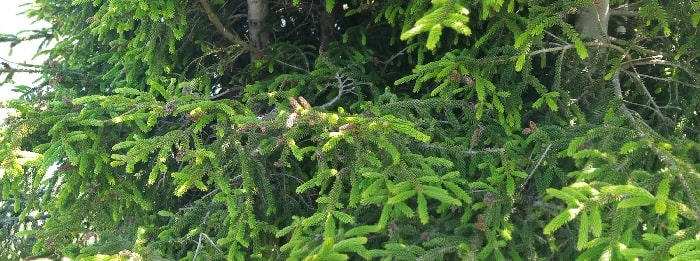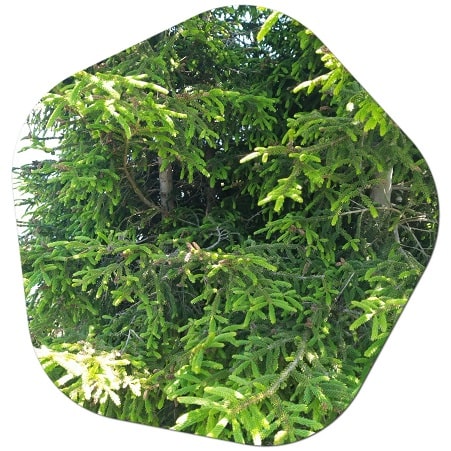Can Spruce Trees Grow in France? Yes, spruce trees (Picea spp.) can grow in France, although their presence is more limited compared to other tree species. Spruce trees are not native to France but have been introduced and cultivated in certain regions for their aesthetic and commercial value. They are often found in mountainous areas and forests, particularly in the eastern and northeastern parts of the country.
The most commonly cultivated spruce species in France is the Norway spruce (Picea abies), which is known for its tall, conical shape and dense foliage. Other spruce species that can be found in France include the Sitka spruce (Picea sitchensis) and the Colorado spruce (Picea pungens). These spruce trees are valued for their timber, as well as their ornamental use in landscaping.
The suitability of growing spruce trees in specific areas of France will depend on factors such as climate, elevation, soil conditions, and local regulations. Spruce trees generally prefer cool climates with well-drained soils and thrive at higher altitudes. They can tolerate acidic soils and are often found in mountainous regions where these conditions are met.

If you are considering planting spruce trees in France, it is recommended to consult with local horticultural experts or forestry authorities to determine the best species and cultivars for your specific location. They can provide guidance on suitable planting sites, care, and maintenance practices to ensure the successful growth of spruce trees.
Which forests in France have spruce trees?
Spruce trees (Picea spp.) can be found in various forests throughout France, particularly in mountainous regions and areas with cooler climates. Here are some forests in France known to have spruce trees:
- Vosges Mountains: Located in northeastern France, the Vosges Mountains are known for their extensive forests, which include stands of spruce trees. The dense and diverse forests of the Vosges Mountains provide habitat for a range of tree species, including spruce.
- Jura Mountains: The Jura Mountains, which stretch along the border of France and Switzerland, are home to forests that contain spruce trees. The Jura Mountains are characterized by their rugged terrain, diverse vegetation, and extensive forests, including stands of spruce.
- French Alps: The French Alps, particularly in the higher elevations, are known for their alpine forests that include various tree species, including spruce. Spruce trees can be found in areas such as the Haute-Savoie department and other mountainous regions of the French Alps.
- Pyrenees Mountains: The Pyrenees Mountains, forming the natural border between France and Spain, have forests that contain spruce trees at higher elevations. Spruce can be found in parts of the Pyrenees National Park and other mountainous areas.
- Massif Central: The Massif Central, a mountain range in central France, includes forests with spruce trees, particularly in the higher altitudes. This region encompasses various national parks and nature reserves that protect and preserve the biodiversity of the area.

It’s important to note that the presence of spruce trees in these forests may vary depending on specific locations, elevation, and other environmental factors. The distribution and abundance of spruce trees can also be influenced by local climate conditions, soil types, and historical land management practices. If you are planning to explore or visit these forests, it is recommended to consult with local forestry authorities or park management for the most up-to-date information on spruce tree populations in the specific areas of interest.
What are spruce trees used for in France?
Spruce trees (Picea spp.) have several uses in France, both commercially and for their ecological value. Here are some common uses of spruce trees in the country:
- Timber and Wood Products: Spruce wood is highly valued for its strength, durability, and versatility. It is commonly used in the construction industry for various applications, including building frameworks, flooring, interior paneling, and furniture. Spruce timber is also used for making doors, windows, and other wooden products.
- Pulp and Paper Production: Spruce trees are an important source of raw material for the pulp and paper industry. The wood fibers from spruce are used to produce high-quality paper, cardboard, and other paper-based products.
- Christmas Trees: Spruce trees, with their dense foliage and symmetrical shape, are popular choices for Christmas trees in France. They are cultivated and sold during the holiday season for use as decorative trees in homes, offices, and public spaces.
- Landscaping and Ornamental Purposes: Spruce trees are widely planted in parks, gardens, and landscaped areas for their aesthetic appeal. Their tall, conical shape and dark green needles make them attractive additions to the landscape. Spruce trees are often used as windbreaks, privacy screens, or to provide shade in urban and suburban areas.
- Ecological Functions: Spruce trees play an important role in the ecosystem by providing habitat for various animal species and supporting biodiversity. They help stabilize soils, reduce erosion, and contribute to the overall health and functioning of forest ecosystems.
- Traditional and Cultural Uses: In certain regions of France, spruce trees have traditional and cultural significance. For example, in the Alsace region, spruce trees are used in the construction of traditional timber-framed houses known as “maisons à colombages.”
It’s worth noting that the specific uses of spruce trees in France may vary depending on regional preferences, market demands, and local traditions. The economic and ecological value of spruce trees makes them an important resource in various industries and contributes to the country’s forestry sector. Spruce tree in France >>
How to prune spruce trees in France?
Pruning spruce trees (Picea spp.) in France follows general guidelines for pruning coniferous trees. Here are some tips for pruning spruce trees:
- Timing: Prune spruce trees during the dormant season, which is typically in late winter or early spring before new growth begins. Avoid pruning during hot and dry periods or in late fall when the tree is preparing for winter dormancy.
- Sanitize Tools: Before pruning, make sure your pruning tools (such as pruning shears or loppers) are clean and sharp. This helps minimize the risk of spreading diseases between trees. You can sanitize the tools by wiping them with a disinfectant solution or rubbing alcohol.
- Remove Dead or Damaged Branches: Start by identifying and removing any dead, diseased, or damaged branches. Make clean cuts just outside the branch collar (swollen area where the branch meets the trunk) using sharp pruning tools.
- Thin Out Overcrowded Branches: Thin out the interior branches to improve airflow and light penetration. Selectively remove some of the smaller, weaker branches to reduce crowding and allow for better development of the remaining branches. This helps maintain a more open and balanced canopy.
- Maintain Natural Shape: Spruce trees have a naturally conical or pyramidal shape, and it is generally recommended to maintain this natural form while pruning. Avoid excessive pruning that can lead to an unnatural or unbalanced appearance.
- Prune for Clearance: If necessary, prune lower branches to provide clearance for walkways, structures, or other plants. However, avoid removing too many lower branches as they contribute to the overall structure and aesthetic appeal of the tree.
- Avoid Over-Pruning: It is important not to over-prune spruce trees as they have limited ability to regenerate new growth from older wood. Prune selectively and avoid removing more than 25% of the total foliage in a single pruning session.
- Regular Maintenance: Regularly inspect your spruce trees for any pruning needs throughout the year. Remove any dead, diseased, or damaged branches promptly.
If you have large or mature spruce trees or if you are unsure about pruning techniques, it is recommended to consult a professional arborist or tree care specialist who can provide expert guidance and ensure proper pruning practices specific to your spruce trees in France. Which region in France grows spruce trees? >>
